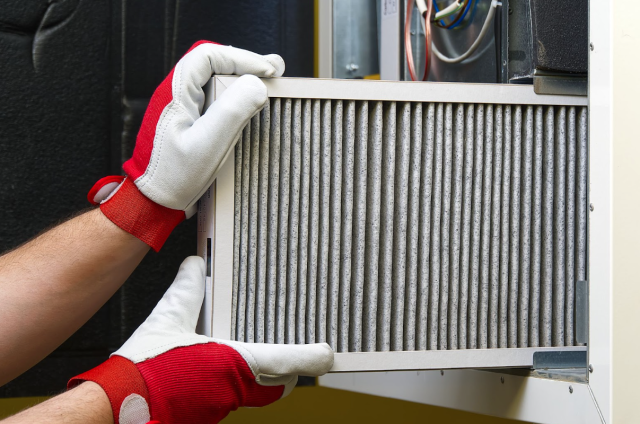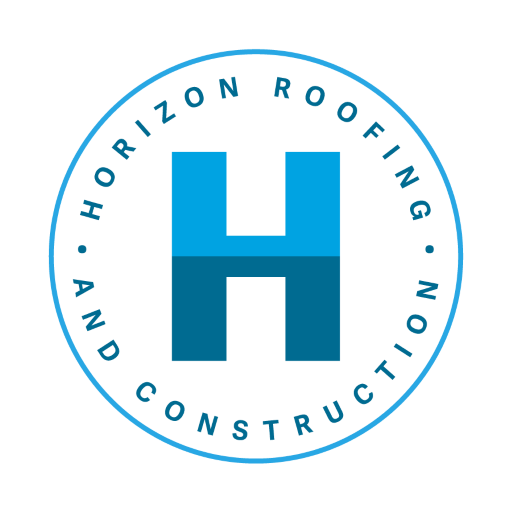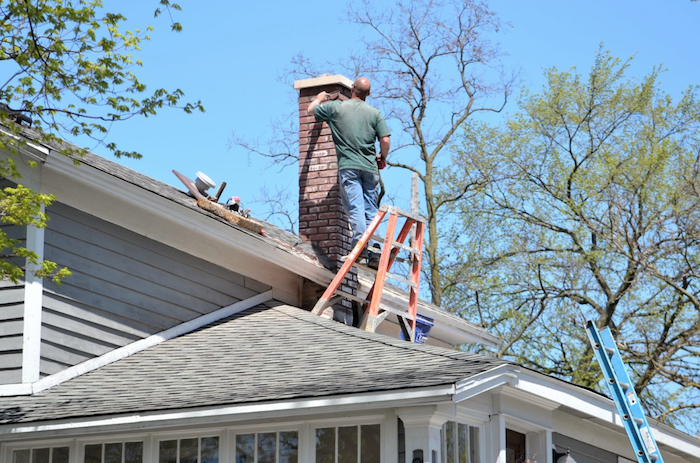As a homeowner, there are maintenance checks that you need to perform periodically. Conducting these assessments regularly allows you to catch any malfunctions while still small and relatively easy and inexpensive to fix. The following are the five most essential aspects of your routine home check:
1) The Gutters
Gutters accumulate debris, primarily leaves. When your gutters get clogged, they’re unable to drain water properly. As such, water can pool and overflow onto your roof or seep into your basement, sometimes developing algae, mold and mildew here. This can damage your exterior wall, causing the paint to peel and chip. Additionally, stagnant water pooling in your gutters provides a breeding ground for mosquitoes and flies.
Gutters should be cleaned at least twice a year. Ideally, one of these two times would be autumn when a lot of leaves are falling. It might be necessary to do this more often if your property is heavily populated with trees.
2) Air Filters
HVAC systems are made to improve air quality, in addition to regulating its temperature and circulating it. These systems trap dust and other pollutants in the air as they circulate clean air. However, if your air filters are clogged, this process can’t be properly performed. Consequently, your air quality is compromised and the HVAC will likely suffer damage.
Additionally, clogged air filters raise your energy bill since more power is required to keep your system working. Dirty air filters increase your energy consumption up to 15%.
Manufacturers usually include instructions about how often to replace your air filters on the packaging. Depending on composition, they may need to be changed every 30, 60 or 90 days. If you’re unsure, leave it to your HVAC technician to find out for you.

3) Water Leaks
Water leaks can cause serious damage in different ways, compromising the structural integrity of your structure as water leaks into your roof, walls or basement. Leaks can also cause mold and mildew to develop.
It’s important to check for leaks by:
- Checking the pressure relief valve on the hot water tank. If the drain pipe can’t be removed, listen for a hissing sound.
- Checking the toilet by taking off the tank and listening for the same hissing sound.
- Checking the line that runs from the meter to the house.
- Examining the hose bibs. These are the pipes that the hoses are hooked to. There will typically be one at the front and one at the back.
- Checking taps, hoses and drip irrigation systems outdoors. Faucets, showers and appliances like dishwashers and washing machines should also be checked.
4) The Roof
Water can cause a lot of damage to your roof. Sometimes, water stains or mold indicate a leaky roof. However, once water gets through your roof, it can be diverted, for instance by insulation. So even if there’s a sign of water in one corner, the leak may be coming from somewhere else altogether.
A good place to start looking is the underside of your roof. The attic typically gives a good view with a flashlight. Look for areas that are darker than surrounding roof sheathing.
Check your insulation as well. Use protective gear for this and carefully remove it adjacent to the area showing signs of a leak. Then, follow the path from the damaged area to the one in the roof where water is seeping in.
Check your roof vents too. If there, they’ll usually be close to gable ends, ridges or both these areas. With time, the seals surrounding your vents weaken which can let rainwater seep in. Be sure to also check for damaged or missing shingles at this time.
Lastly, if you can’t find the source of your leak, simulate rain by opening a hose over your roof. This needs to be done with one person spraying water from the rooftop and someone else looking for the leak with a flashlight in the attic.
5) The Deck
A leaking deck can cause water to get into your floor and up your walls. Molding, discoloration and rot over a section of your deck makes it easy to locate. If absent, check for seams that can let water pass through. Also, examine the door installation for gaps. If there is drainage under your deck, it should also be looked at. Flashing should be assessed to ensure the caulking is still intact and the siding coverage should be looked at to ensure water doesn’t get around the edging and start causing damage. Once any repairs are done, it’s important to seal your deck to prevent water leaks and future damage.
Conclusion
Clearly, it can be quite the task locating water leaks in different parts of your house, let alone repairing them. Maintenance checks include using a ladder to reach your roof, which can be a risky undertaking. If you live in the area of Southeastern Michigan, the expert you can trust without any risk is Horizon Roofing Construction.
Rather than looking for leaks after you spot signs of them, this skilled team of contractors can do scheduled checks to prevent them, taking a proactive approach. If any leaks or vulnerable areas are discovered, these can be fixed before becoming a bigger problem. If for some reason a full roof replacement is needed, Horizon Roofing Construction is the place to call. Also servicing HVAC, changing filters, cleaning and repairing gutters, these reputable professionals can repair and seal leaking decks.
Periodic home maintenance checks, when forgotten or put off, allow small problems to quickly become big ones. Contact the company trusted by so many homeowners to come and do a complete check on your home. You can rest easy when you know you can count on decades of experience and dedication in making sure you’re home, safe, and dry.

